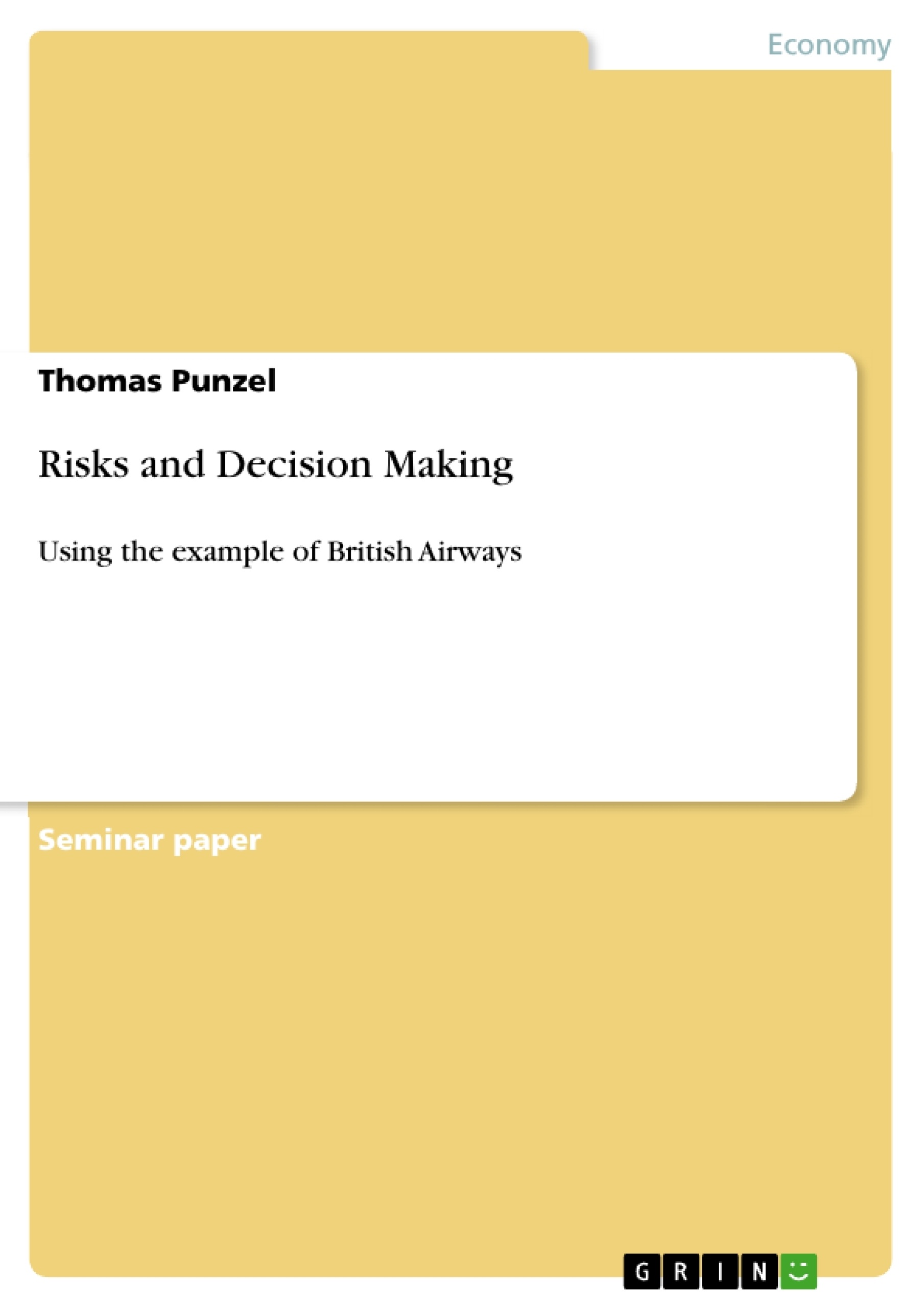Nowadays strategic planning comes more than ever to the fore. In the course of an onward globalisation and with an increasing stress of competition, it becomes more and more difficult for entrepreneurs to keep or to improve their market position.
For this account, strategic planning comes into the main focus to choose the best strategy for a business.
However, every business man knows that there are always chances and risks in economic life.
For this reason, risks cannot be eliminated, but they can be managed.
Especially in the airline industry, the competition is on a very high level. Since 2001 more and more low cost carriers have been competing with the big well known national airline companies like Lufthansa or British Airways.
That’s why a well thought out strategic management, strategic planning and of course risk management are essential to overcome the stress of competition.
This report will analyse why risk management is so important in strategic planning. By evaluating different models and techniques, the best method to analyse the internal and external environment will be elaborated.
By using a current business paper, in that case the annual report of British Airways Plc 2007, different kinds of risks will be analysed and strategies will be given, to overcome and mitigate those risks.
Inhaltsverzeichnis (Table of Contents)
- 1. Introduction
- 2. Company Background
- 3. Airline Industry Analysis
- 3.1 External Environment Analysis
- 3.1.1 The Operating Environment
- 3.1.2 The Remote Environment
- 3.2 Internal Environment Analysis
- 3.1 External Environment Analysis
- 4. Risks and Uncertainties British Airways is facing
- 4.1 Internal Risks
- 4.2 External Risks
- 5. Mitigating Risk in the Airline Industry
Zielsetzung und Themenschwerpunkte (Objectives and Key Themes)
This report analyzes the importance of risk management in strategic planning within the airline industry, using British Airways as a case study. It evaluates models and techniques for analyzing internal and external environments, identifies key risks faced by British Airways, and explores strategies for mitigating those risks.
- The significance of risk management in strategic planning for airlines.
- Analysis of the internal and external environments of British Airways.
- Identification and classification of internal and external risks faced by British Airways.
- Evaluation of risk mitigation strategies within the context of the airline industry.
- Assessment of British Airways' existing risk management framework.
Zusammenfassung der Kapitel (Chapter Summaries)
Chapter 1: Introduction introduces the increasing importance of strategic planning and risk management in a competitive global market, focusing on the airline industry and the challenges posed by low-cost carriers.
Chapter 2: Company Background provides an overview of British Airways, its business segments, network, and financial performance. It also highlights the company’s fleet age and its involvement in strategic alliances.
Chapter 3: Airline Industry Analysis examines the competitive landscape of the airline industry, employing Porter's Five Forces and PESTLE analysis to analyze the external and internal environments influencing British Airways. This chapter explores the operating environment, competitive forces, and macroeconomic factors impacting the industry.
Chapter 4: Risks and Uncertainties British Airways is facing identifies and categorizes internal and external risks. Internal risks include financial, operational, and technological challenges, while external risks encompass political, economic, social, technological, environmental, and competitive pressures.
Chapter 5: Mitigating Risk in the Airline Industry discusses British Airways' approach to risk management, including its risk assessment processes, software utilization, and risk response strategies such as risk avoidance, reduction, and transfer.
Schlüsselwörter (Keywords)
Risk management, strategic planning, airline industry, British Airways, low-cost carriers, Porter's Five Forces, PESTLE analysis, SWOT analysis, internal risks, external risks, risk mitigation, risk assessment, financial risks, operational risks, technological risks, competitive pressures, regulatory environment.
- Citar trabajo
- Thomas Punzel (Autor), 2008, Risks and Decision Making, Múnich, GRIN Verlag, https://www.grin.com/document/122109



